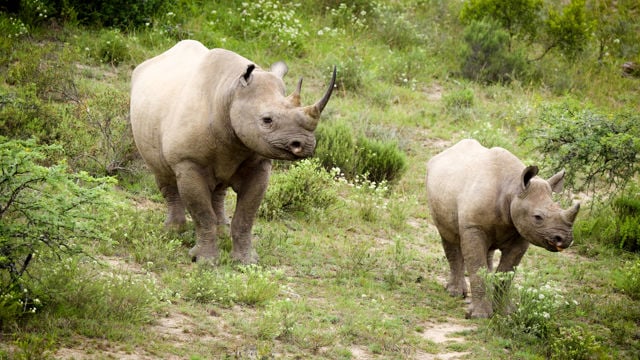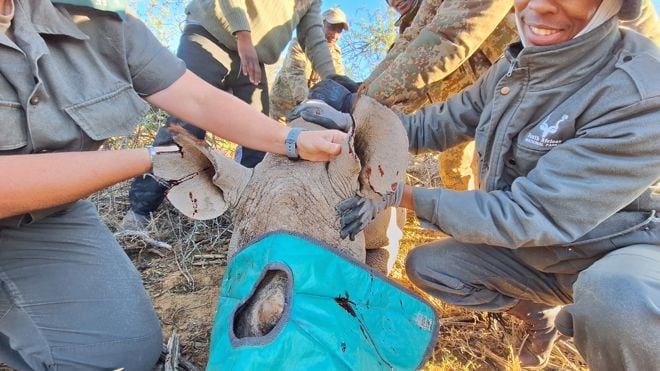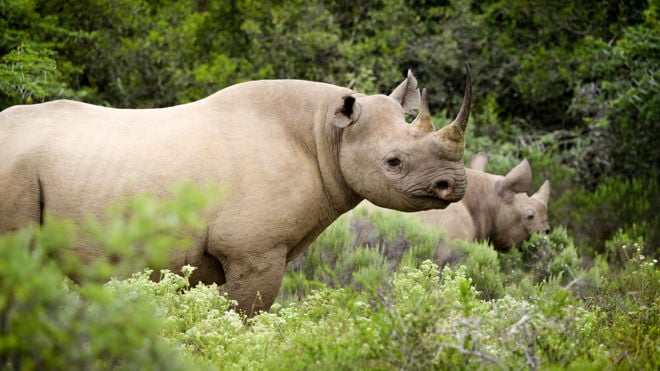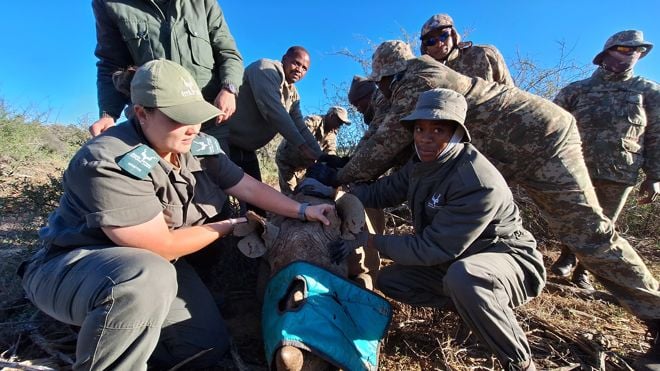Rhino Bond: How innovative finance is saving wildlife

A success story from South Africa shows how private investments are helping to increase the rhino population and strengthen local communities.
South Africa is home to one third of the world’s remaining black rhinos, an endangered species under constant threat from poaching and habitat destruction.
Protecting black rhinos offers benefits far beyond their survival. As an “umbrella species,” their conservation helps safeguard entire ecosystems, supporting countless other species and habitats. This also benefits local communities that depend on the same ecosystems for food, fuel and income, including wildlife tourism.
However, limited financial resources make it difficult to tackle root causes, leaving both rhinos and local communities vulnerable. Is there a way to ensure a future where both people and rhinos thrive?

New conservation model
Traditional conservation funding is falling short and private sector investment is sorely needed. In a bid to address these pressing issues, the Global Environment Facility (GEF) and the World Bank introduced the five-year US$150 million Wildlife Conservation Bond, or “Rhino Bond” in 2022.
Unlike conventional bonds that give investors regular interest payments, the Rhino Bond directs those payments – totaling around US$9 million – straight into conservation projects in South Africa’s Addo Elephant National Park and Great Fish Nature Reserve. When the bond ends after five years, investors get back the full amount they paid for the bond. They also receive potential success payouts – up to US$13.76 million – depending on how much the black rhino population increases. The size of the payouts follows the percentage of the black rhino growth rate.

Early results are promising. From a worrying decline of 3.70% in late 2021, conservation measures have pushed the growth rate to a striking 7.65% by the end of 2023—far surpassing the 4% target.
These achievements are not isolated; they signal improvements in management of large park areas that are home to other species, water catchment areas, and serve as carbon sinks. The parks have developed theories of change and environmental plans, targets, and budgets. Enhanced counter-poaching measures, increased ranger staffing and training, and adoption of modern monitoring technologies are just a few of the investments made possible through the Rhino Bond.
Benefits the local communities
Crucially, the Rhino Bond includes and benefits the local communities that depend on these parks for their livelihoods. Investment in shared responsibility and job creation creates local engagement which is key for lasting results.
One of the parks is half-owned and co-managed by the community, while in the other park, around US$150,000 is earmarked for community interventions, with locals playing a key role in sanctioning the project.
Employment opportunities have arisen directly through increased park staffing and indirectly via infrastructure development and wildlife tourism. Moreover, black rhino conservation strengthens ecosystem services like clean water and pollinator habitats that serve the local citrus industry.

As of November 2024, the project was estimated to have benefited thousands of people and increased representation of female staff in conservation services – showing that an investment in rhino protection is also an investment in local economic growth.
Inspirational innovation
The Rhino Bond has set an example for the future of conservation funding. The model has already inspired similar initiatives, such as the “Chimp Bond” in Rwanda, which is designed to conserve chimpanzees.
– Innovating financing tools such as the Rhino Bond are changing work on conservation: they catalyse private investment which is sorely needed to tackle the fundamental threats to biodiversity, while supporting job creation and driving economic growth for local communities , said Per Fredrik Pharo, head of department at Norad.
Norway supports the Global Environment Facility (GEF) with NOK195 million a year in state aid. GEF’s integrated and innovative approach to climate and environmental work makes them an important and relevant partner in Norad’s development work.